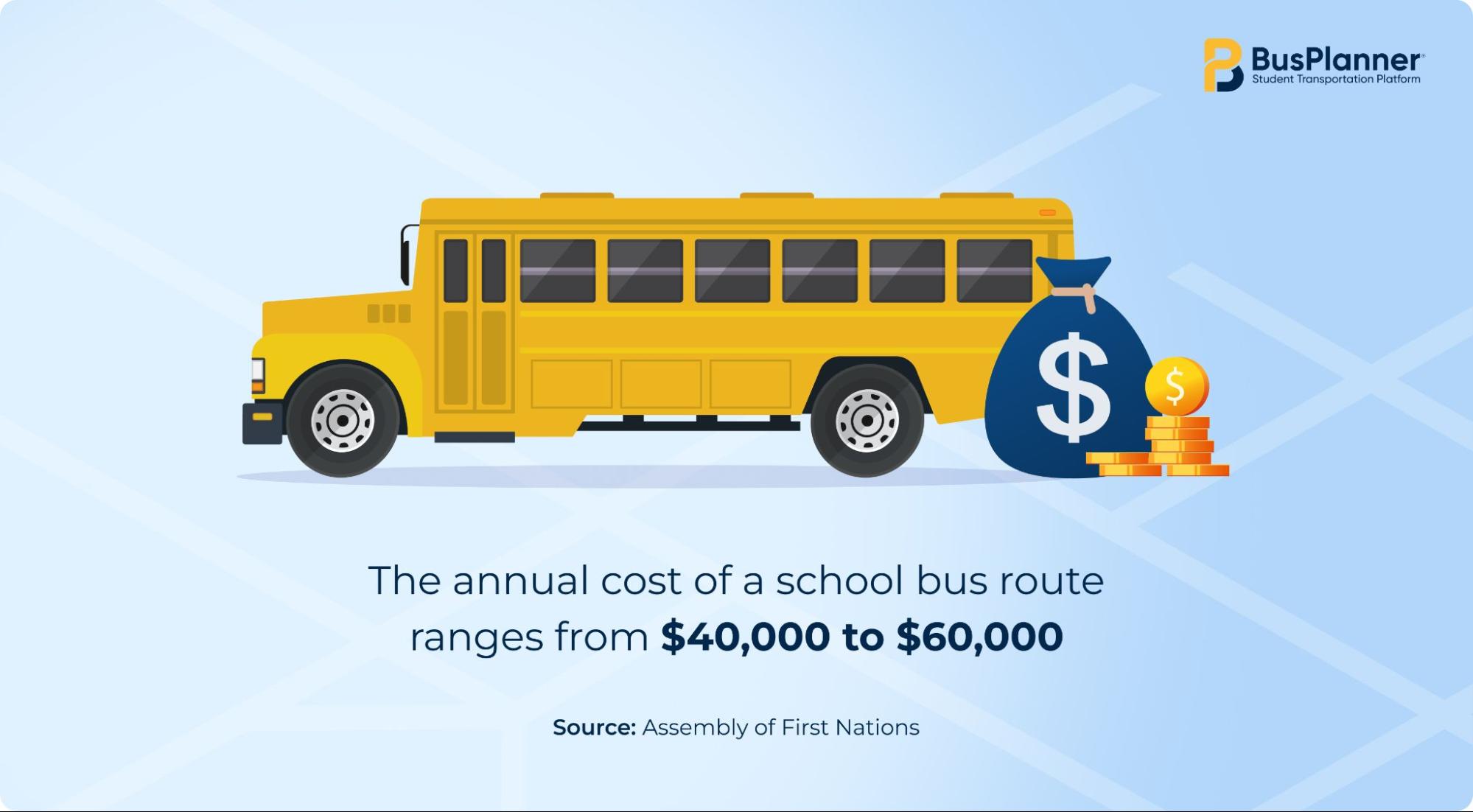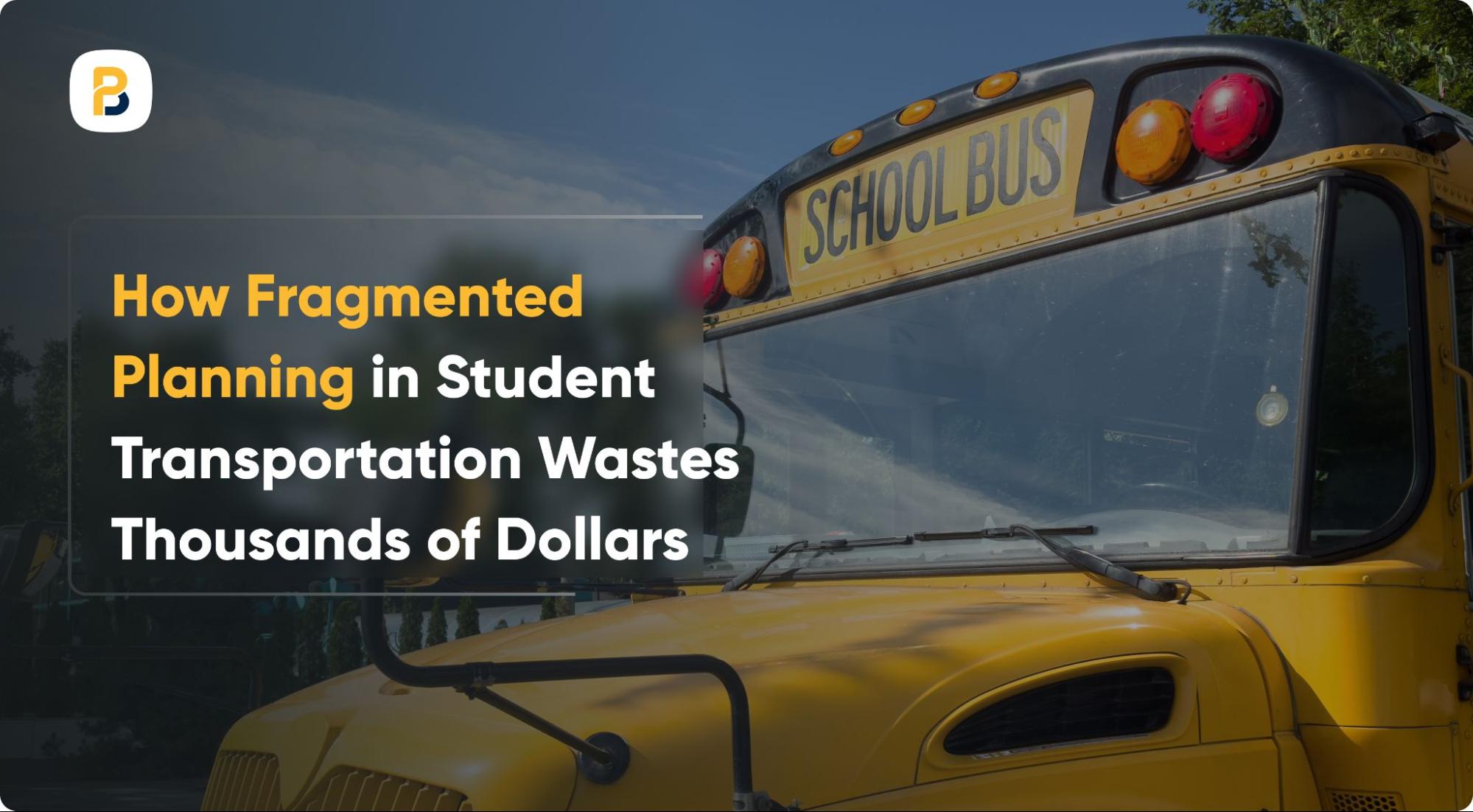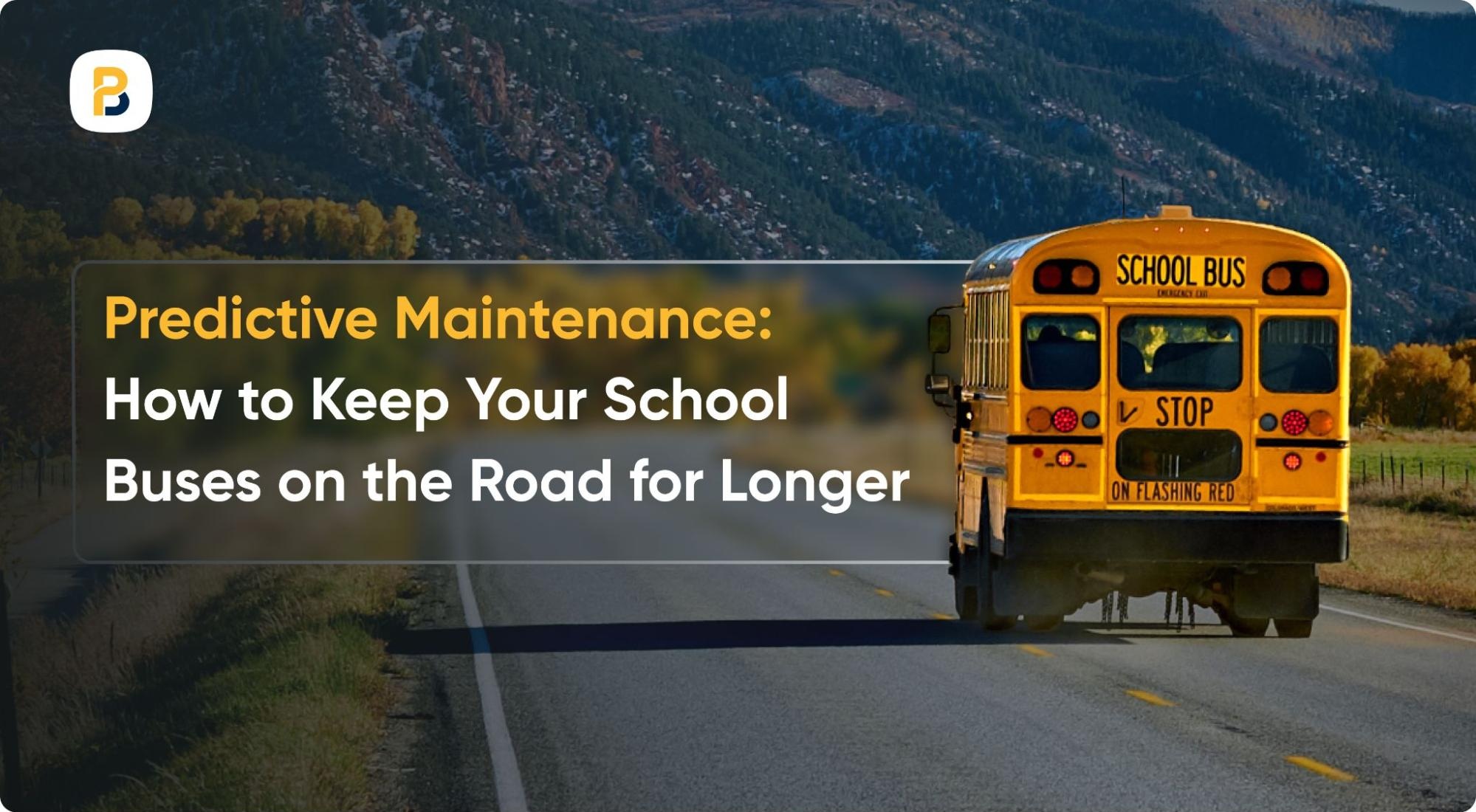Many school districts in the United States see student transportation as a critical factor — yet it is often overlooked when budgets are prepared. Data indicates that the US spends more than $28 billion annually to transport slightly more than half of public school children to and from the classroom.
Inefficiencies caused by fragmented planning can result in a significant portion of the budget being lost, as departments operate without the necessary tools and resources to optimize their use. Fuel wastage, an underutilized fleet, delayed pickup and dropoffs, and increasing costs can hit the department all at once if fragmented planning in student transportation continues.
Take a look at how fragmented planning drains your budget, and how an integrated platform for student transportation planning can streamline operations and save thousands of dollars.
1. Inefficient Routing
Routing is one of the most crucial factors that keep a student transportation network running efficiently. Without the right routing decisions, districts can waste time, fuel, and money.
A core route planning software leverages a centralized network of student data and advanced mapping tools to:
- Reduce Operational Costs: Efficient routes and timing management minimize wasted miles, lowering annual costs per bus.
- Save Time: Optimized routes ensure students are picked up and dropped off promptly, avoiding unnecessary delays.
- Protect Vehicles and the Environment: By eliminating redundant mileage, the software reduces fuel consumption, emissions, and vehicle wear.
- Improve Planning Accuracy: Considering school schedules, road restrictions, closures, and student addresses enables precise, actionable routing.
2. Ineffective Real-Time Data Usage

Real-time data is essential for modern student transportation, but it must be managed effectively. Outdated student lists, overstaffing, and underutilized fleets can significantly increase costs, particularly in the absence of proper planning.
Consider these facts:
- A typical 72-passenger school bus route costs $40,000–$60,000 annually.
- Even one unnecessary extra route can add thousands of dollars in additional costs.
Real-time tracking using school bus GPS software can provide timely updates and information about student movements or withdrawals, preventing costly delays.
3. Manual Coordination Slows the System
Fragmentation affects not just internal operations but the broader school transportation ecosystem. Without proper coordination between districts, schools, drivers, and administration, major issues can arise.
Problems caused by poor coordination include:
- Delays and miscommunications
- Loss of trust from parents
- Frustration, missed pickups, and safety concerns
- Expensive fixes and PR efforts to restore trust in the system
However, mobile apps like Chipmunk enable parents to receive real-time updates, ensuring they are always informed. At the same time, districts, schools, and drivers can leverage the vast array of features available in a student transportation platform to manage changes efficiently, thereby reducing delays and miscommunications.
4. Inefficient Pre-Planning
Planning before the start of the new school year is one of the most effective ways to stay ahead throughout the year. With inefficient pre-planning, the school transportation department can lag and suffer at the start of the new year due to:
- Poorly maintained fleets
- Improperly calibrated engine hours
- Untrained drivers
- Unoptimized schedules and routes
A School bus fleet management and routing software can simplify this process by automating maintenance schedules, optimizing routes, and streamlining driver assignments. With the right tools, departments can reduce inefficiencies, cut costs, and begin the school year on a stronger footing.
Why Fragmented Planning Needs to be Addressed
Fragmented panning isn’t just inconvenient — it’s excessively expensive. Without coordination, proper route planning, and efficient communication, things can fall apart early in the school year. School districts can move towards a more integrated and technologically driven platform to not only gain control over their operations but also to pre-plan efficiently and save thousands of dollars annually.
Contact us now to learn how BusPlanner’s all-in-one student transportation platform can help your district plan more effectively.







